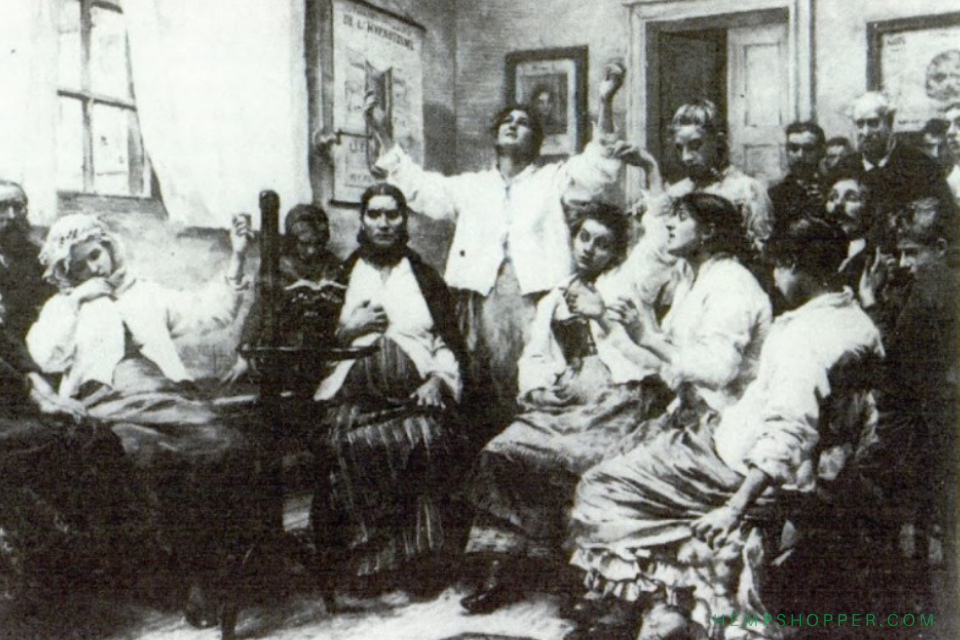400 BCE: Hopewell tradition Mound Builders smoke marijuana and produce hemp fabrics

400 BCE: Hopewell tradition Mound Builders smoke marijuana and produce hemp fabrics.
The group of cultures collectively called Mound Builders were prehistoric inhabitants of North America who constructed various styles of earthen mounds for burial, residential, religious and ceremonial purposes.
Since the 19th century, the prevailing scholarly consensus has been that the mounds were constructed by Indigenous peoples of the Americas, early cultures distinctly separate from the historical Native American tribes extant at the time of European colonization of North America. The historical Native Americans were generally not knowledgeable about the civilizations that produced the mounds. Research and study of these cultures and peoples has been based on archaeology and anthropology.
Clay pipes with cannabis residues and wrapped in hemp cloth
In 1891, in his study of Prehistoric Textile Art of Eastern United States, Smithsonian Institute ethnologist W. H. Holmes showed that the ancient Mound-Builders used cannabis. Hundreds of clay pipes, some containing marijuana residues and wrapped in hemp cloth, dating back to 400 B.C.E were found in the so-called Death Mask Mound of the Hopewell Mound Builders (Hopewell Tradition) who lived in the North-eastern and Midwestern United States, modern Ohio.[1]
During this so-called Woodland period, artisans crafted many ceremonial pipes into the shapes of various animals and sometimes people. The remarkable animal effigy platform pipes of the Hopewell culture who florished from 200 BCE to 500 CE, are among the most delicate and naturalistic of these sculpted effigies. Archaeologists have found them mainly in ceremonial deposits at two sites, Mound City and Tremper Mound.[2] The animals may represent the spirit guides of shamans who smoked the pipes to induce a trance state to assist with rituals of healing. The animal generally would be facing the shaman smoking the pipe.
At a site in Morgan County, Tennessee, Holmes recovered large pieces of hemp fabric: “As if to convey to the curious investigator of modern times a complete knowledge of their weavers’ art, the friends of the dead deposited with the body not only the fabrics worn during life but a number of skeins of the fiber from which the fabrics were probably made. This fiber has been identified as that of cannabis sativa, or wild hemp […]” [1]
1. HOLMES, W. H.: 13th Annual Report, Smithsonian Inst., Bur. of Ethnology (1891-1892); Prehistoric Textile Art of the Eastern United States. 2. DOUGLAS T. Price, and Gary M. FEINMAN (2008). Images of the Past, 5th edition. New York: McGraw-Hill. Research and text © Hempshopper Amsterdam.


 Hempshopper Amsterdam
Hempshopper Amsterdam 





